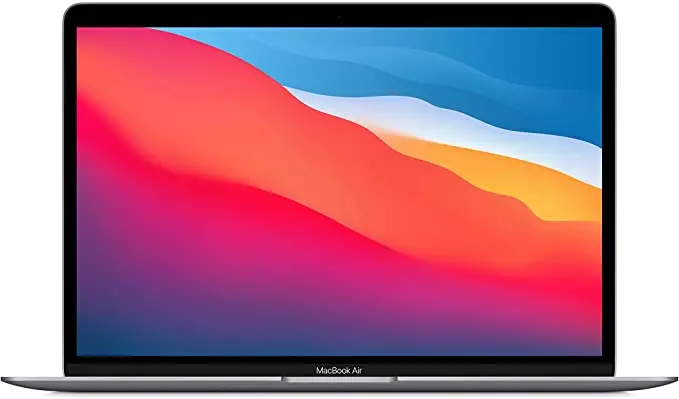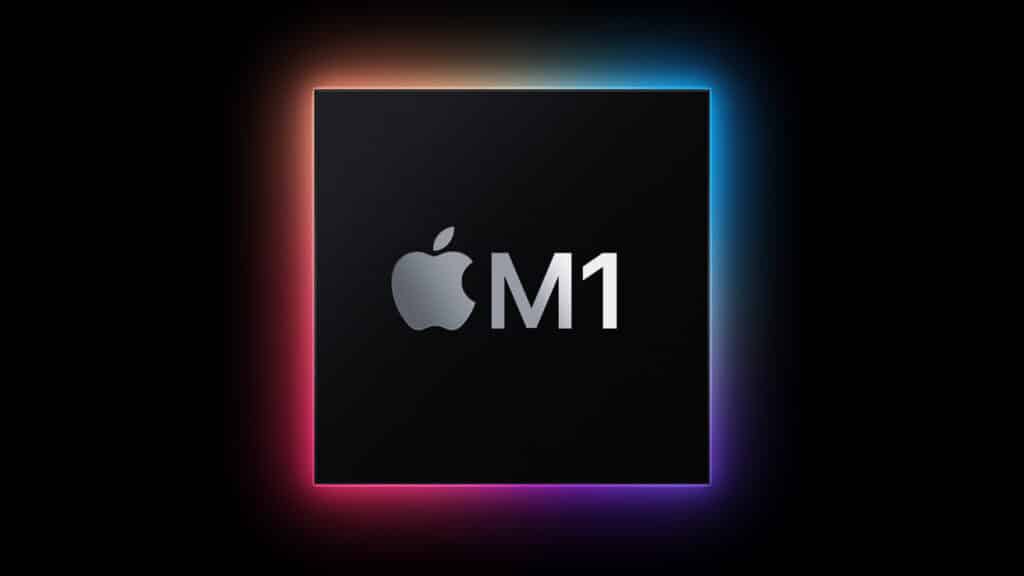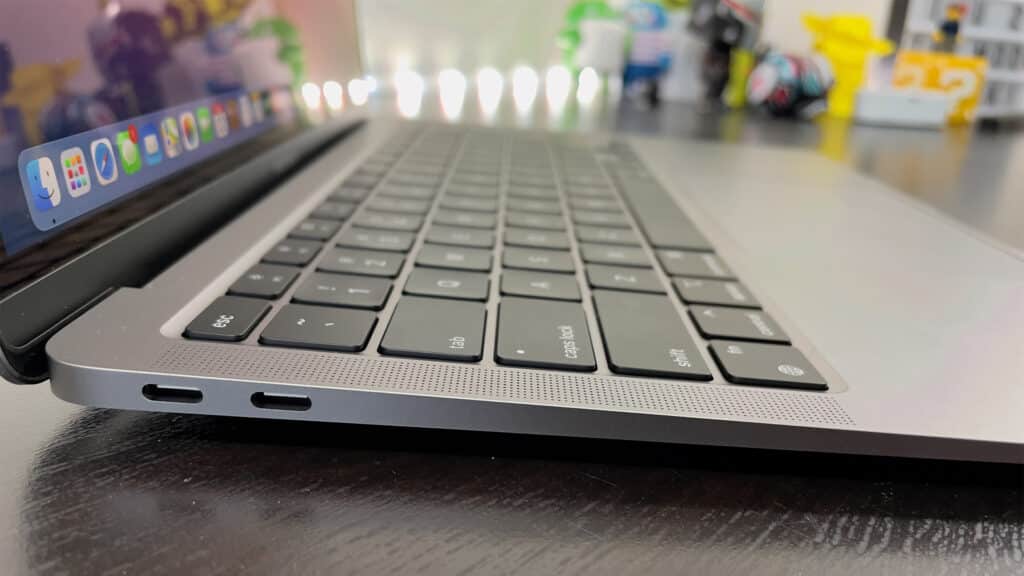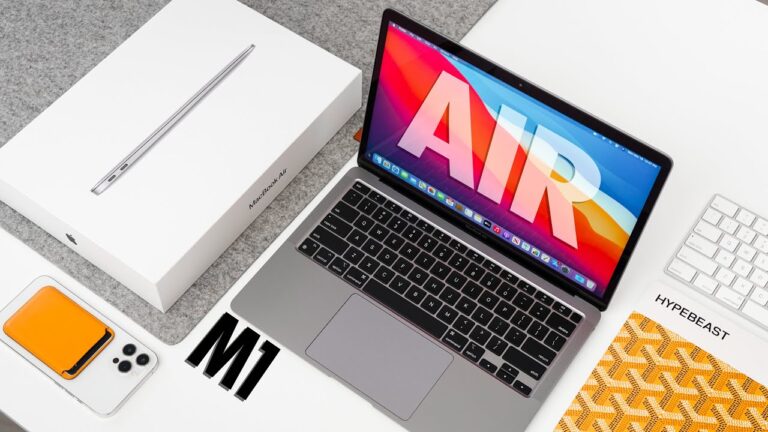While you can keep an eye out for Apple’s annual iPhone release, the company’s Mac update timetable is a little more erratic. When Apple debuted the Intel-based MacBook Air in Spring 2020, everyone expected it would be the end of the line for another year – or potentially longer, if Apple’s track record is any indication. As a result, when Apple revealed a new MacBook Air M1, consumers were perplexed. But, rather than being just another spec increase, the new MacBook Air has been completely redesigned — at least on the inside.
Apple’s tiniest and slimmest laptop, the MacBook Air (M1, 2020), has taken a huge leap forward in performance. The Apple M1 CPU, the manufacturer’s widely regarded, extremely powerful ARM-based technology, powers the 2020 Air, providing it with the much-needed boost.
Along with macOS 11 Big Sur, it comes pre-loaded at its release — any MacBook Air M1 you purchase today should either come with the new macOS Monterey or be eligible for a free upgrade to it since it has become one of the most powerful thin and light notebooks. It touts improved performance, as well as improved power efficiency and battery life while maintaining the same cost as its predecessor.
As a result, the MacBook Air (M1, 2020) comes with improved internals at no extra cost. So, if you weren’t convinced by the Intel-based version, perhaps this one will. It is also our current choice for the greatest laptop in the world.
What will you see here?
Price and availability

Despite the significant increase in performance over the Intel-based model introduced in early 2020, the MacBook Air begins at the very same £999/$999 as its predecessor, keeping it Apple’s cheapest notebook, though the more powerful variant costs a bit more at £1,249/$1,249.
If you want to see how the MacBook Air stacks up against the competition, check out our list of the best laptops.
If you purchased a MacBook Air a few months earlier, you might be irritated that it’s already out of date. That $999 / £999 starting price isn’t only the lowest way to acquire an Apple laptop; it’s also a highly competitive pricing point, undercutting several of the finest 13-inch Windows 10 laptops, such as the Dell XPS 13. Think again if you thought Apple’s laptops were pricey in comparison to the competition.
Design

The MacBook Air (M1, 2020) is helping to challenge people’s perceptions about MacBooks. However, the MacBook Air, including the MacBook Pro 13-inch (M1, 2020) as well as Mac mini (M1, 2020), also provide strong rebuttals to Apple’s frequently leveled criticism that its product lines are more style than substance.
People frequently disparage Apple as producing items that look nice but don’t accomplish anything especially new in terms of hardware. The MacBook Air M1 (2020), on the other hand, is the polar opposite.
The MacBook Air M1 (2020) looks almost identical to its predecessor, measuring 212.4mm thick and having nearly identical sizes to the new MacBook Pro. However, Apple trimmed the design of the MacBook Air to assist shave off a bit of weight while maintaining the unique Air look that Apple has lent for years. That much is certain: it is readily recognizable as a MacBook Air.
There were speculations that switching to Apple’s own hardware would lead to lighter iPhones, however, this is not the case. However, one significant design improvement allowed by the M1 processor is that the MacBook Air M1 (2020) is now fanless. This implies that the internals stays cool enough during workloads without requiring fans to turn in and cool things down. There is a caveat, but it means the MacBook Air M1 (2020) operates nearly silently, which is extremely astounding.
Because the lack of fans may have allowed Apple to make the MacBook Air smaller and lighter, it’s curious that it’s the same weight and size as its predecessors.
Keyboard and Trackpad
Apple has struggled with its laptop keyboard credibility, with older MacBook consumers remaining apprehensive following the butterfly mechanism fiasco. For those who are unfamiliar, the keyboard mechanism used on Apple’s laptops from 2015 to 2019 had performance difficulties when dust and debris accumulated beneath keys, leading to mis-presses and other hassles you wouldn’t expect from a premium laptop.
Below the keyboard is the same huge trackpad as in previous MacBook versions, and it functions just as well as you’d expect, with plenty of areas to swipe, tap, and click. And, yes, it still has the truly mind-boggling incorporation of haptic feedback, which fools you into believing the absolutely motionless trackpad vibrates when you click.
Because of the magic, you assume you’re clicking on a regular trackpad, without the extra risk of Apple needing to incorporate actual moving components that may fill with dust & other particles and become clogged over time.
Ports
The connectors are the same as on current MacBook Airs, including two Thunderbolt 3 connections and an audio jack. Thunderbolt 3 ports offer charging, as well as powering external displays and transferring data at up to 40Gb/s. It’s relieving to note that Apple’s switch to its own M1 processor, rather than Intel’s, hasn’t resulted in the loss of Thunderbolt connectors.
WebCam
The webcam above the screen remains the same as before, with the identical 720p FaceTime webcam. The 720p resolution feels antiquated when most rivals offer 1080p, and with more individuals working from home these days, users have preferred Apple to upgrade the camera.
However, the business says that the image signal processing has been revamped as a result of the M1 chip, offering the camera reportedly greater noise reduction & dynamic range, as well as auto white balance.
Performance

Because of some software wizardry utilizing Apple’s Rosetta 2 tool, which lets programs function on the new architecture, all applications that you normally run in macOS on Intel-based MacBooks will operate perfectly with the MacBook Air M1 (2020).
The performance of the MacBook Air M1 (2020) is pretty excellent. It starts up immediately, Big Sur is fast and efficient, and the operating system looks great. The UI has a more contemporary appearance, with bright, brilliant colors that wonderfully highlight the screen of the MacBook Air. It’s also less crowded, so you’re not swamped by icons and settings, and the Control Center has been revamped to match the iOS version. It looks nicer and is simpler to use.
Not only can you run almost every existing Mac software on the MacBook Air M1 (2020). However, because of the M1 chip’s design, you can also run any iOS app or game. This adds a slew of new tools to the MacBook, which is actually exciting. iOS applications and games are more feature-rich and visually stunning than ever before, and having access to them might be game-changing. We tried a couple of iOS apps, and they performed well on the MacBook Air – the MacBook has suddenly become a capable gaming computer.
In fact, the MacBook Air can handle everything you throw at it. You can move your mouse around your toolbar, launching each app without breaking a sweat. Software intended for the M1 chipset opens almost fast, Apple Arcade games run smoothly, and the laptop feels snappy. Also, even Intel-based apps that run through Apple’s Rosetta 2 layer perform similarly to native apps.
Battery life

The benefits of the new M1 processor extend to power efficiency, as seen by the battery life of the MacBook Air. It has the same 44.9Wh battery as the MacBook Air from early 2020. However, it lasts 6 hours extra, clocking in at 18 hours on average against 12 on the Intel-based model.
It was beaten by the Qualcomm Snapdragon-powered Samsung Galaxy Book S, which lasted an astonishing 25 hours and 24 minutes. However, it’s safe to say Apple’s MacBook Air is far more powerful – as seen by our benchmark testing.
This means you should be able to spend a whole work day without having to charge the MacBook Air. However, the battery will certainly decrease faster if you’re undertaking more heavy chores with it.
It doesn’t quite match the 13-inch MacBook Pro M1 (2020)’s massive 13 hours and 22 minutes, but you can’t see anybody complaining about the MacBook Air M1 (2020)’s battery life.
How long will the MacBook Air M1 2020 last?
According to professionals, a MacBook Air should last 7 years before having to replace. Because of RAM and storage constraints, if you use your Macbook Air for animation, picture editing, or gaming, it will probably last a year or two shorter.
Is 256GB SSD enough for MacBook Air M1 (2020)?
Purchasing a new MacBook Air or MacBook Pro is not going to be inexpensive. Even the entry-level versions are pricey. However, going with 256GB is a huge error that will bring you unfathomable problems in the long run. Simply put, 256GB of storage is insufficient if you intend to use the MacBook on a regular basis.
Conclusion
The MacBook Air M1 (2020) is without a doubt one of the most intriguing Apple laptops released in recent years. Its M1 processor is a game-changer, and its ability to run traditional software, M1-optimized apps, and iOS apps is amazing. The battery life is likewise outstanding, as is the performance.
The Apple-designed M1 chipset, built on Apple’s A-Series CPUs, outperforms the Intel-based MacBook Air from 2020 in almost every regard. It’s quicker, more powerful, and generally more competent, but there’s also an increase in battery life.
The major drawback is that due to the bladeless architecture, performance cannot be sustained over long periods of time. Therefore anyone looking to do 6hr+ video editing may be better suited with the M1-based MacBook Pro or Mac Mini.
Read More:
- Apple’s Mac Studio delivers beastly performance for its size!
- MacBook Air vs iPad Pro: Which one you should get for yourself?
- Upgraded and powerful MacBook Air 2022 -What should we expect?
- The best Rugged Cases for MacBook Pro for that ultimate protection!
- Best Mac for gaming purposes you can choose from in 2025!
















